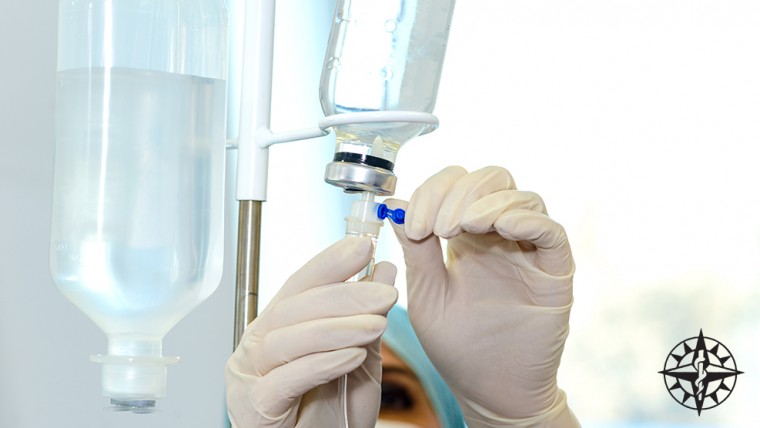Published on: June 1, 2021
An “Infectious disease” is a broad term that can cover a wide variety of conditions. From the common cold and flu to tuberculosis, syphilis, yellow fever and even the Black Plague. Infectious diseases have haunted humanity since before recorded history to the current COVID-19 pandemic that has recently infected more than 170 million people globally. Since it spans so many illnesses, it is important to define what is meant by an “infectious disease”.
Infectious Disease Classification | Infectious Disease Definition
An infectious disease is one that is caused by the entrance of a pathogenic agent or microorganism (such as bacteria, viruses, protozoans, or fungi) into the body where it grows and multiplies thereby causing illness. Some microorganisms can be good for you, but others can cause illness and be classified as infectious disease-causing microorganisms.
There are many ways to be exposed to infectious diseases unknowingly. Without proper care, it could happen when you least expect it. Infectious diseases can be spread through person-to-person contact, secondary contact, animal contact, or even through the food you eat and water you drink. While there are many ways for infectious diseases to spread, there are also ways to protect yourself and others, such as:
- proper hygiene and good sanitation
- risk minimization
- vaccines
Vaccines add a strong layer of protection against infectious diseases and have been pivotal in eradicating certain diseases almost entirely. A vaccination allows, in most cases, for a weaker version of whatever disease you are trying to combat to be introduced into your body. Your body then easily defeats it and learns how to better prepare in case a stronger version of that disease comes along. Vaccination is a powerful tool that should be utilized whenever possible to combat disease.
The Power of Vaccines: The Eradication of Smallpox
Smallpox was a vicious infectious disease that has been estimated to have killed around 500 million people in the last 100 years of its existence alone, many of its victims being children. It spread through inhalation of the Variola virus, usually from the mucus or spit droplets of an infected person via coughing, speaking, or sneezing, as well as transmitted through infected bedding or clothing.
A breakthrough in fighting smallpox came in 1796, when the English doctor Edward Jenner discovered that milkmaids previously infected with cowpox were immune to smallpox. Cowpox was a common, mild disease that began in cows and could be spread to humans via cuts on the hands or through rodents. While cowpox was not pleasant, it was far less deadly than smallpox, and Dr. Jenner used a cowpox sample collected from a volunteer and inoculated it into the arm of a 9-year-old boy.
Months after exposing the boy to cowpox, Dr. Jenner exposed him to the Variola virus, the virus responsible for causing smallpox. After several experiments, the boy was proven immune to smallpox. Dr. Jenner expressed hope that smallpox would someday be eradicated and provided his research to the world. Almost two hundred years later, after decades of vigorous vaccination efforts, the World Health Assembly declared smallpox eradicated in 1980.
Infectious Disease Symptoms
Many infectious diseases exist as do a wide range of symptoms. Some symptoms can be specific for a certain infection, while others are very common and can be shared among a wide variety of diseases. They are more often a side effect of your body fighting off the invasion. Some common symptoms that may hint at an infectious disease include:
- Fever, chills
- Nausea, vomiting
- Diarrhea
- Fatigue
- Muscle aches
- Coughing
- Rash
If you have these symptoms and especially have been around someone diagnosed or suspected of an infectious disease or perhaps bitten by an animal, it is best to see a medical professional as soon as possible.
Most Common Infectious Diseases in the World, USA, and Florida
Some infectious diseases are more widespread than others and can affect millions of people at a time. Others can be specific to a certain area. It is good to know what diseases may be common in your region so you can take the necessary precautions to stay safe. Here are just a few examples of infectious diseases you may find in different places, but most can be found almost anywhere:
Globally
- Malaria
- Tuberculosis
- HIV
- Hepatitis B
- Syphilis
- Influenza
United States
- HIV
- Influenza
- Viral hepatitis
- Lyme’s disease
Florida
- HIV
- Hepatitis A
- Zika (2016)
Infectious Disease Associates of Tampa Bay (IDATB)
Infectious Disease Associates of Tampa Bay provides top quality care to patients in the Tampa Bay metro area. If you feel that a loved one has been infected or would like to test for an infectious disease, then please call us to schedule an appointment. IDATB offers over 30 years of experience treating patients with infectious diseases and provides an in-house lab for any necessary testing. To schedule an appointment or consultation, call IDATB at (813) 251-8444.





